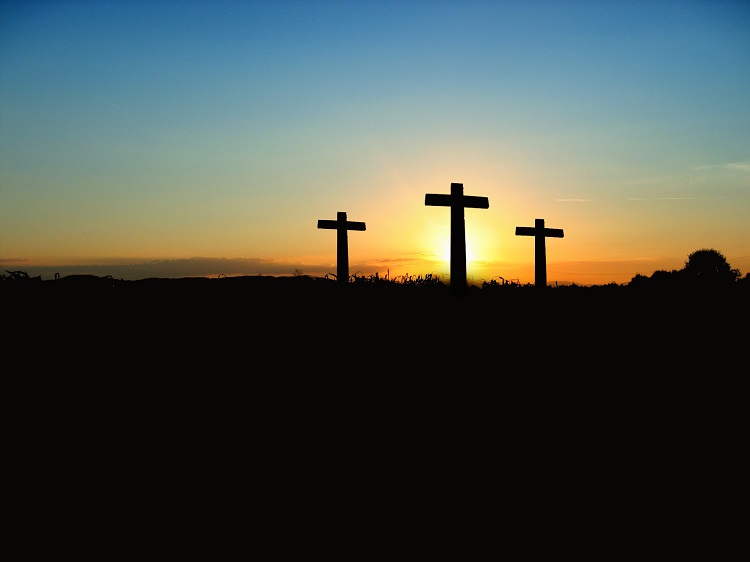The Holy Week starts on Palm Sunday and ends in the early morning hours of Easter Sunday. That week is also the last week of Great Lent.
Greek Easter is the most spiritual holiday within the Greek Orthodox faith.
During the Holy Week, we revive a sacred memory of the events leading up to the crucifixion and death of Jesus Christ. Each day holds special meaning based on the actions of Jesus in his final hours.
Palm Sunday
Palm Sunday is often called Passion Sunday. That day is marked with the celebration of the day Jesus entered the city of Jerusalem on a donkey. When he entered the city, people welcomed him by waving palm branches and announce him as their savior. The people of Jerusalem were not aware that Jesus was going to be crucified and they would be the ones who would have wanted his death. That day is also known as the day to remember the sacrifice Jesus made, following his triumphant entry.
Monday, Tuesday and Wednesday
The first part of Holy Week is these days which are based on the themes of the last days of Jesus’ earthly life. The story of Passion, as recorded by the Evangelists, comes before a series of events in Jerusalem and a collection of parables, centered on Jesus’ divine sonship, the kingdom of God, the Parousia, and Jesus’ criticism of the hypocrisy and bad motives of the religious leaders.
Those observances of the first three days of the Holy Week are rooted in these incidents and constitute a single liturgical unit. For these three days, there are different parables, Holy Monday is about the honor of Joseph, the Patriarch, the beloved son of Jacob. The story of Joseph shows the mystery of God’s providence, promise, and redemption. His life shows the power of God’s love and promise. The lesson from Joseph’s life is the ultimate redemption wrought by the death and resurrection of Christ. The other parable is about the cursing of the fig tree which symbolizes a man without virtue.
Additionally, the parables of Holy Tuesday are related to the Second Coming. The first is the parable of the Ten Virgins symbolizing the faith that we must always be ready to welcome the Lord. The second is the parable of Talents and has the allegorical meaning of the working man. On Holy Wednesday the attention is on the prostitute, the sinful woman who has rebelled and believed in Jesus and smeared His feet with myrrh.
Moreover, Holy Wednesday is the last day of freedom Jesus had before his arrest. Jesus called his pupils and had the Last Supper with them. Jesus washed his pupils’ feet while teaching and giving them His final instructions to pass his message of helping others through the love and sacrifice of Jesus Christ. After the Last Supper, Jesus went to pray in the Garden of Gethsemane until late. On that day, Judas, one of Jesus’ 12 disciples, betrayed Jesus for 30 silver coins and gave up Jesus to those who wished to kill him.
Holy Thursday
The Holy Thursday is the day of the greatest drama for all Christianity, a day dedicated to the Passion of the Savior on the Cross. The sufferings Jesus endured are mockery, the crown of thorns, scourging, nails on His hands and feet, thirst, the vinegar and gall, and cry of sadness. Later that day, Jesus Christ died on the Cross.
Holy Friday
On Holy Friday, the body of Jesus was removed from the cross wrapped in white clothes and buried in a tomb. He descended to Hades and was declared dead. This day is the most important day of Holy Week. On this day, the bells are ringing sad melodies. Before people attend church for the evening, women and children will take flowers to decorate the symbolic tomb (epitafios where Jesus was buried. Once the death of Christ is mourned, the community comes together for a procession that takes them to the cemetery and back to Church while believers follow the epitafios and hold lighted candles.
Holy Saturday
Holy Saturday marks the day of Jesus’ death and His resurrection. That day is also the day where drama turns into happiness. That day embodies, in the fullest sense, the meaning of happiness and sadness, feelings which dominate the celebrations of Holy Week. Before Easter Sunday, on Saturday at midnight, the church goes completely dark and after midnight, we have the resurrection of Jesus and the churches light up with candlelight, the Saint Light, which arrives from the Church of Holy Sepulchre. People “announce” to each other “Christos Anesti” which means “Christ is risen” and respond “Alithos Anesti” which means “Indeed, He is risen”.

